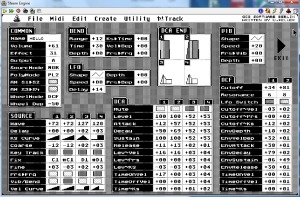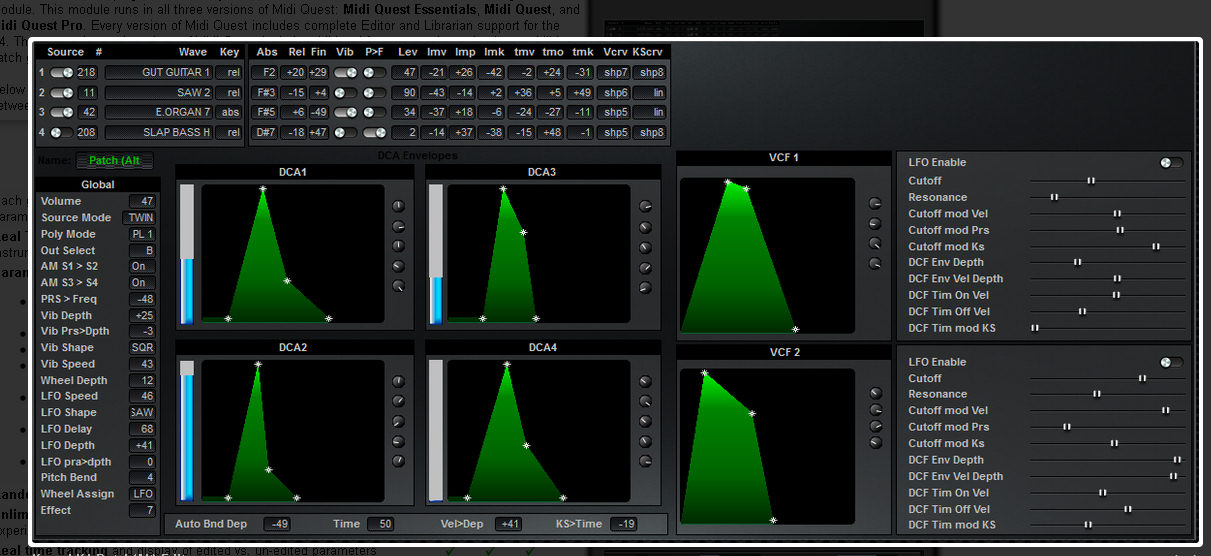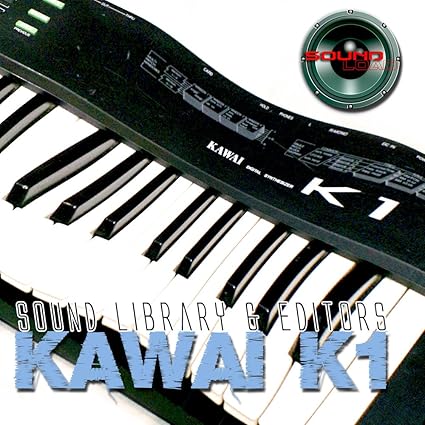- View and Download Kawai Synthesizer K4r owner's manual online. Kawai America Corporation K4/K4r Synthesizer Owner's Manual. Synthesizer K4r synthesizer pdf manual download.
- A huge collection of Mac Patch Editors & Librarians software - freeware, shareware, and demos - that you can download for free. K4 Librarian: Editor for Kawai K4. Mac: Shareware: 1994-02-08: 4: 50db: DX7 Librarian 1.2.7: Allows you to make up library of voice data for DX7. Mac: Shareware: 2004-10-13: 0.
- Made to be used with Macs, the Keychron K4 already has the Mac function keycaps, but can also work with Windows. This keyboard has Bluetooth, so you can pair up to 3 devices and switch quickly between them. 1800 Compact keyboards are hard to find, so if you want to try this layout with your Mac I would advise you to try the K4.
- This page contains owner's manual PDF files for current and previous generation Kawai digital pianos. Novus NV10 Owner's Manual. Novus NV5 Owner's Manual. CA99/CA79 Owner's Manual. CA99/CA79 MIDI Manual. CA98/CA78 Owner's Manual. CA97/CA67 Owner's Manual. CA95/CA65 Owner's Manual.
Midi Quest Kawai K4 Editor and Librarian for Macintosh and Windows Sound Quest's Midi Quest multi-instrument editor/librarian gives you the tools to get the most from your Kawai K4. Midi Quest includes all of the standard features you would expect to find in a K4 Editor and Librarian along with unique capabilities found nowhere else.
Creating Multi-Patches On and Sequencing With the Kawai K-4 Series
Before you can begin to do any sequencing with the K-4 synthesizer series instruments, you must first create a Multi patch configured for multi-timbral operation. A Multi patch is nothing more than a collection of up to 8 Single sounds, and what you do with them is up to you. You can layer them all on top of one another, or split them eight ways across the keyboard, but that is not what you want to do for sequencing. You want to set each of the eight Sections on a separate MIDI channel so that they can respond independently to the incoming MIDI messages from your sequencer. Here’s how it’s done.
Preliminary SYSTEM settings:
1. Push “WRITE” 5 times
2. Push “- NO” to set “INT PROTECT = OFF”.
3. Push “SYSTEM”
4. Use “- NO” or “+ YES” to set “SYSTEM/MIDI = RCV”
5. Push “SYSTEM” again, then set “RCV CH = 1” using the “- NO” button.
6. Push “SYSTEM” again, then set “OMNI = OFF” using the “- NO” button.
7. Push “SYSTEM” again, then set “RCV PRG = SECT” using the “+ YES” button.
8. Push “MULTI” to exit the SYSTEM mode and begin editing.
Creating a Multi patch for sequencing:
1.Pick any Multi patch that you are not particularly fond of, for it will be overwritten.
2 Push “EDIT”
3.Push “C” for Window 3
NOTE: The upper left corner of the display shows the current parameter for editing.
The upper right corner shows the on/off status of the 8 Sections and their channels.
The lower left corner shows the Single patch assigned to the selected Section.
The lower right corner shows the parameter’s value for the selected Section.
Pushing the numbers 1-8 will select the different Sections for editing (an underscore “_” will appear with the Sections MIDI receive channel)
The numbers 9-16 correspond to the same 8 Sections, but function as on/off switches (SECTION MUTE) for each. A Section which is turned on shows it’s MIDI receive channel; off shows as a dash (-). Turn all of the Sections on now.
a.The first parameter in Window 3 is RCV CH (receive channel). For this example, set the RCV CH = the Section number. So, Section 1 = channel 1, Section 2 = channel 2, etc. Use the Section Select buttons (1-8) to pick the section you want to edit, then use “- NO” or “+ YES” to change the value. When you are done, the numbers “12345678” will be displayed in the upper right corner. Now you are finished with Window 3.

b.This step is only for K-4 keyboards, not modules.
Push “C” again to get the next parameter in Window 3, MODE. This determines whether or not the sounds can be played from the keyboard (KYBD), incoming MIDI, or both (MIX). You want MODE = MIDI for each Section (use 1-8 to choose them and -/+ to change the value).
The K-4 has a Local control in the SYSTEM mode, but this method is also a way to make your K-4 synthesizer operate as if the Local Control is OFF. The keys no longer play the sounds, so you must make sure that the sequencer “echoes” the MIDI from the keyboard back out to the K-4’s input. This is usually called “MIDI ECHO” or “SOFT THRU” or “ECHO THRU” on most hardware and software sequencers. Conveniently, only this patch will operate as if the Local control is off, and the keys will play the rest of the patches normally, even when disconnected from the sequencer.
4. Push “B” for Window 2
a.The first parameter in Window 2 is ZONE LO. This is the lowest note a Section can play. Because you never know in which range of the keyboard you’ll be playing while sequencing, it is best to have all the keys available in this Multi patch. This range is 128 notes wide from C-2 to G8. Set the ZONE LO = C-2 for each Section. (Remember to use 1-8 to choose the Section, and -/+ to change the value.)
b.Push “B” again to get the next parameter in Window 2, ZONE HI.
Set the ZONE HI = G8 for each Section.
c.Push “B” again to get the last parameter in Window 2, VEL SW (velocity switch). This is a feature for switching between two sounds (SOFT/LOUD) with keyboard velocity (touch sensitivity), or adding a new layer with only high (LOUD) velocities, etc. But since these sounds will be sequenced, they should play at ALL velocities. Set VEL SW = ALL for each Section (by now you know to use 1-8 and -/+).
5. Push “D” for Window 4
This window deals with level, transposing, tuning, and submix. Because this patch is for generic use with sequencers, you want to set these parameters to nominal values, and make any deviations with the software or hardware sequencer itself.
a. set LEVEL = 100 for each Section
b. set TRANS = 0 for each Section
c. set TUNE = 0 for each Section
d. set SUBMIX = A for each Section
Push “EDIT” twice to see which OUTPUT patch is currently assigned to this Multi patch. On most K-4s (and K-4r’s) you can set OUTPUT PACH = 1. See the document on OUTPUT ASSIGNMENTS for more information on this subject.
NOTE: Window 1 is for assigning the Single patch you want to each Section. But if you pick the sound by sending a MIDI Program Change message instead (one for each Section) from the sequencer , it is very easy to change your mind about the patch selection later. This way, the same Multi patch (yes, the one you are making right now) can be used for any song you might record, and the sequencer remembers which sounds you wanted. Here is a chart of how the Program Changes match the Single sounds…
|
EXAMPLE: Single B-7 => Program Change #23 on the sequencer
6. Saving your work

a. Push “WRITE”.
(At this point, you can choose to save this edited patch to a new destination by using -/+ or the VALUE slider. You can even write directly to a RAM Card by choosing a destination starting with “E”, like EB-14. If you do nothing, the patch you started with will be overwritten.)
b. Push “WRITE” again to get the “EXEC?=Y/N” display
c. Push “+ YES” and the display will ask you if you are “SURE?”
d. Push “+ YES” again and you’ll get “COMPLETED!”.

That’s it!!! Now you have a working Multi patch that can be used for any sequencing task you can dream up, so go ahead and dream.
Kawai K4 Patches
I’ll tell you how this post is built. First I list the features of the Viscount Physis Piano K4 EX keyboard. Then you have a video or two, purchase links and useful comments from other users and then you have one of the most useful parts; comparison tables with similar keyboards so you can compare.
- 88 Weighted keys with hammer mechanism
- Velocity sensitive
- Aftertouch: Calibratable from 0% -100%
- 9 easily assignable sliders
- 9 Endless knobs
- 9 Buttons
- 4 Controller banks
- 128 shows consisting of 4 scenes and 8 zones
- Colour display (4.3″ Multicolour Graphic LCD show, 480 x 272 px)
- Includes integral Physis-Piano EX Soundboard with all real modeling Sounds (Different sounds of piano and other instruments) from the Physis Piano H1
- Connections: 2 x midi (MIDI allows you to do such wonderful things as connect the keyboard to the computer, record a soundtrack and with certain programs pass with a click what you have played to musical notes in a score. MIDI tracks store information from musical notes) input
- 8 x MIDI output
- USB-to-Device
- 4x USB
- 8x pedal (The most important pedal of a piano or keyboard is the sustain pedal and is used to keep the note playing even if you stop pressing the key.) connections
- 6.3 mm Headphone output
- 6.3 mm L / R audio output
- Dimensions (W x D x H): 1287 x 355 x 134 mm
- Weight: 18 kg
- Colour: Blue
- Made in Italy
This keyboard usually has a price around 1.49 €
Now that we’ve seen the features of this keyboard Viscount Physis Piano K4 EX watch these related videos to learn more.
Watch this video on YouTube
Post you may be interested in
Viscount Physis Piano K4 EX vs Akai MPK mini Mk2
What will you find in this post?
- 5 Where to buy the keyboard Viscount Physis Piano K4 EX
The keyboard Viscount Physis Piano K4 EXis usually 87 € cheaper than Akai MPK mini Mk2.
And then a video of the keyboard
Akai MPK mini Mk2 | |
|---|---|
|
|
And then a video of the keyboardAkai MPK mini Mk2
Watch this video on YouTube
If you want to know more about this option, click on the following link to see the Akai MPK mini Mk2 review
Viscount Physis Piano K4 EX vs Akai LPK 25
The keyboard Viscount Physis Piano K4 EXis usually 43 € cheaper than Akai LPK 25, but the difference is so small that this can vary..

And then a video of the keyboard
Akai LPK 25 | |
|---|---|
|
|
And then a video of the keyboardAkai LPK 25
Watch this video on YouTube
If you want to know more about this option, click on the following link to see the Akai LPK 25 review
Viscount Physis Piano K4 EX vs Swissonic EasyKey 49
The keyboard Viscount Physis Piano K4 EXis usually 68 € cheaper than Swissonic EasyKey 49.
And then a video of the keyboard
Swissonic EasyKey 49 | |
|---|---|
|
|
And then a video of the keyboardSwissonic EasyKey 49
 Watch this video on YouTube
Watch this video on YouTubeIf you want to know more about this option, click on the following link to see the Swissonic EasyKey 49 review
Viscount Physis Piano K4 EX vs Alesis Q49 Keyboard Controller
The keyboard Viscount Physis Piano K4 EXis usually 65 € cheaper than Alesis Q49 Keyboard Controller.
And then a video of the keyboard
Alesis Q49 Keyboard Controller | |
|---|---|
|
|
And then a video of the keyboardAlesis Q49 Keyboard Controller
Watch this video on YouTube
If you want to know more about this option, click on the following link to see the Alesis Q49 Keyboard Controller review
Where to buy the keyboard Viscount Physis Piano K4 EX
Thomann
- Free Shipping.
- Full warranty. If you have any problems, they take care of everything.
- 100% reliable payment.
- Leader in trouble-free shipping.
- Usually Best price.
- Best Reputation: They are the leading online store in Europe and have the best catalogue and information.
Amazon
Kawai K4 Ebay
- Free Shipping and possibility of shipping in one day with Amazon Premium.
- Full Guarantee but they are no experts in music equipment.
- Sometimes better price.
- He’s got worse stock than Thomann.
Kawai K4 Editor For Mac Os
Also look at these models with a similar price and features: